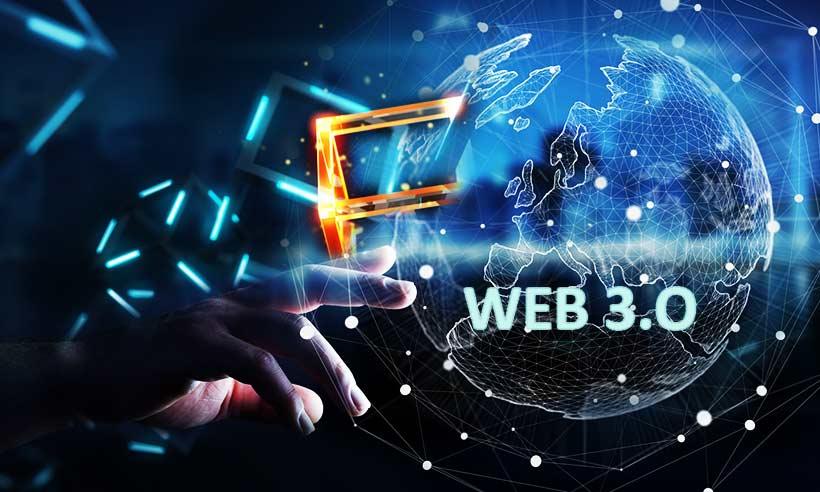Five Reasons Why Banks Should Seriously Consider Web 3.0
This redesign of the internet is also known as the “Semantic Web,” and it is expected to change how people work, communicate, interact, and collaborate.
In this emerging space, data will be held in decentralized networks powered by blockchain technology, thus allowing Web 3.0 to become fully trustless and permissionless. As such, the opportunities that may become available with the adoption of Web 3.0 are almost limitless. The technology has the potential to transform the traditional financial space, including capital markets, asset management, insurance, and banking.
In this short guide, we will take a look at some of the reasons that will make Web 3.0 indispensable to financial institutions, especially banks, in the near future.
Web 3.0 Will Help Banks Know their Customers Better
The new internet will be anchored by artificial intelligence and machine learning. These two technologies will also have access to decentralized data securely stored on blockchains. As such, banks and other financial institutions could use the AI and ML components of Web 3.0 to gain meaningful insights into their customers.
Web 3.0’s enhanced computing power will make it possible to discern, evaluate, and analyze data in context, thus enabling banks to provide hyper-personalized experiences to their clients. Banks could leverage Web 3.0 to mine for online sentiment among their clients and use the information to tailor products in line with their most personal needs. And in such a highly competitive sector, a more personalized service could be the factor that pushes prospective clients to place their money with a particular financial institution.
Better Security and Data Control
As stated earlier, one of the key components of Web 3.0 is decentralized ledger technology, primarily in the form of blockchain. The decentralized architecture of Web 3.0 will provide greater levels of security for data belonging to banking institutions and their clients.
The data will be held in integrated networks of decentralized nodes with the ability to validate and secure transactions. As a result, there will no longer be a need to store data in single centralized repositories susceptible to attacks from bad faith actors.
Web 3.0 will also introduce smart contracts into the banking sector. Smart contracts are transactional protocols that automatically control the terms of an agreement between two or more parties across a decentralized blockchain network.
In the banking sector, smart contracts could be used to execute business logic in response to events such as the transfer of funds or the delivery of goods or services. Web 3.0 could also help structure banks’ security programs with smart contracts to improve privacy protection and guard against data manipulation.
Therefore, by leveraging Web 3.0, banks can give back control and ownership of data to their customers in line with emerging data privacy rules.
Web 3.0 Will Make Banking Processes Cheaper and More Efficient
Globally, the traditional banking sector is struggling in two key areas: know your customer (KYC) compliance and credit reporting.
KYC is the process of verifying the identities of customers in order to prevent criminals from using banks and other financial institutions to carry out nefarious activities such as money laundering.
KYC requests usually take as long as two months to complete and cost banks lots of money. But using Web 3.0, financial institutions could significantly hasten the KYC process while making it less expensive.
Banks could leverage the blockchain component of Web 3.0 to verify and confirm the identities of their clients, and to store the resulting statements and documents. This decentralized database could then be used by other financial institutions to do the KYC process, making it fast, efficient, and inexpensive. Leveraging Web 3.0 for KYC could save banks as much as $160 million a year through the reduction of personnel requirements.
The banking sector could also use Web 3.0 to build a decentralized registry with a universal credit score system. Such a registry will enable people to easily apply for loans and other financial products.
Making Cross-Border Payments More Seamless.
While many actors in the banking sector have adopted cashless and virtual payment technologies, these services still need a trusted intermediary to facilitate the transfers. These third parties often make transactions expensive and time-consuming.
However, banks could use Web 3.0 to both enhance the payment process and lower the costs involved.
Combining Cryptocurrency and DeFi With Traditional Finance
The growth of the cryptosphere, especially decentralized finance (DeFi), is making the global financial market more efficient, transparent, and accessible. With a market capitalization of nearly $3 trillion, crypto has shown itself capable of muscling out the traditional financial system.
Therefore, banks need to add crypto and DeFi components to their existing business models so as not to be left behind by the revolution sweeping the financial sector. And Web 3.0 will be the perfect vehicle for that integration.
Conclusion
Web 3.0 will redefine how both traditional and disruptive businesses interact with the digital world. The traditional financial sector is already under pressure from the unprecedented growth of DeFi protocols, and banks cannot afford to be left behind any further.
Additionally, the wealth of data that will be generated from the enhanced connection between individuals and businesses will create new markets and opportunities that banks cannot afford to be locked out of. So, despite the transition from the social web (Web 2.0) to the semantic web still being in the future, there is a need for the banking sector to start aligning its processes to Web 3.0 as early as possible.

